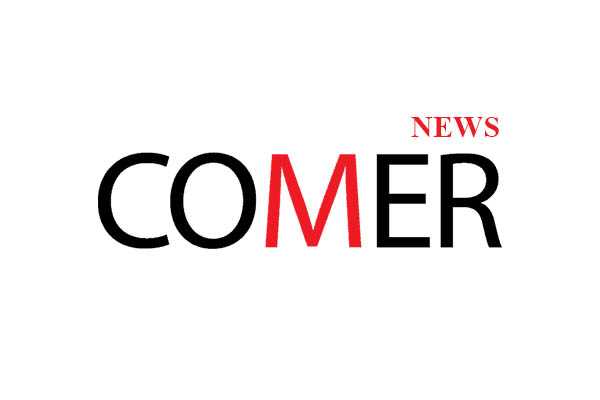By Adele Peters, www.fastcompany.com, January 8, 2018
As activists pressure governments to remove their deposits from banks that back bad policies, cities are considering a new option: become their own financial institution that serves the needs of the citizens, not investors.
When the movement to push the city of Los Angeles from keeping its money at Wells Fargo grew in 2017 – as in other cities that decided to pull money from the bank because of its fake accounts scandal and funding of the Dakota Access Pipeline – organizers of the campaign realized that they faced a challenge: where to put the money next.
The largest city accounts are too big for small community banks to handle, so divestment from one major bank typically means moving money to another major bank that likely has social responsibility issues of its own. In addition, even ethical smaller banks aren’t directly accountable to the public. LA, along with other US cities, is now considering another option: a public, city-owned bank that would keep money inside the community, and follow a socially and environmentally responsible charter.
“This started as a divest campaign,” says Phoenix Goodman, cofounder and policy director for the activist group Revolution LA, which runs both Divest LA and Public Bank LA. “I was tasked with doing research on alternatives and what that would entail financially, and in looking into it, I realized, wait a minute, we have so much money that the only other banks that can handle our accounts are other huge Wall Street firms, all of which are complicit in this same system, more or less. Maybe Wells Fargo is the most egregious, but in a way it’s a smaller victory, because we’re just going to move to another big bank, and we’re not changing the system, we’re changing a symptom of the system.”
A public bank, they realized, could be designed to bar unethical business practices. It could also save the city money. Los Angeles, for example, paid private banks more than $100 million in fees in 2016. Instead of taking out loans for infrastructure projects from major banks, and sending fees and interest outside the city, a public bank could handle the city’s needs itself. Public banks can be set up to hold government deposits and give loans to the government and work as a “banker’s bank” for smaller community banks; in another model, they can also be set up to take consumer deposits. The initial capitalization can come from a variety of sources, including long-term investments, bonds, and crowdfunding.
“That’s our tax dollars that get siphoned off to profits on Wall Street,” Goodman says. “If that same mechanism can be owned by the people themselves within the city, that interest can be reinvested as profits for the bank to be used and reinvested again into new projects, so it would be profit for the city rather than private interests. Because it can save money, fiscally conservative people have found value in that as well.”
In the US, at the moment, only one public bank exists: the Bank of North Dakota. “The whole idea of the Bank of North Dakota, when it was set up in 1919, was to keep North Dakota money in North Dakota for North Dakotans,” says Ellen Brown, an attorney and founder of the nonprofit Public Banking Institute. Her interest in the model was piqued after the 2008 financial crisis. As Wall Street banks collapsed and most state treasuries went into debt, the Bank of North Dakota grew assets and profits because the model, Brown says, is more efficient than traditional banking.
Several cities are now considering the idea, driven in part by the same divestment movement at work in Los Angeles. Santa Fe, New Mexico, which began working on the concept earlier than most, completed a feasibility study in 2016. Washington, DC, has money allocated in the 2018 budget for a feasibility study. Seattle and Portland are considering the idea. Oakland is beginning a feasibility study, and a grassroots group of advocates is raising money for a business plan, the next step in the process. San Francisco is also pursuing the idea. New Jersey’s new governor talked about his support for a state public bank as he campaigned (a state bank would work in a similar way, and could also work in conjunction with city banks).
In California, marijuana legalization is providing another push for public banks. Other banks won’t give dispensaries accounts because of discrepancies with federal law. “The whole situation is ridiculous,” says Susan Harmon, an advocate with Friends of the Public Bank of Oakland. “It’s absurd. The cannabis industry in Oakland pays taxes to the city in cash. They deliver huge bags of cash in armored cars to the city.” Harmon says that it takes city staff five hours to count taxes from Harborside, one large dispensary.
Once the city takes the cash to Chase, the bank can accept it; having a city-owned bank would remove the need to use cash at all. “The DOJ hasn’t come down on Chase for money laundering,” Harmon says. “So there’s something about the magic hand of government touching this cash that launders it, in a good way. It somehow cleans it up and makes it respectable, and lets Chase accept it as a deposit, even though they wouldn’t if Harborside went directly to Chase to try to open an account.”
The problem of weed money will only grow, since recreational marijuana is now legal in California, as of 2018, along with medical marijuana. In 2017, the state treasurer said that the state should begin considering public banks as one option to deal with the hundreds of millions in cash that will be due in taxes.
In LA, organizers say that while they support the idea of using public banks for cannabis money, the idea can move forward with or without cannabis. A task force looked at the legal requirements for a public bank, potential regulatory barriers, and financial benefits and risks, and found the idea feasible on the surface; a next step will be a more detailed examination.
If it works, the city would also have to create a governance model to make the bank responsible. A charter might outline, for example, that profits will be reinvested for the public benefit, and list sectors that would be restricted from investment, such as fossil fuels and private prisons, along with sectors that would be prioritized in line with the city’s goals, such as affordable housing and community land trusts. Bank policy could also limit executive pay and require governance from a board with expertise in issues like sustainable development.
“You can technically have a public bank that is still propped or beholden to the wrong interests, or incompetently run,” says Goodman. “A public bank is not enough. It’s just one pillar of the system that we’re trying to create – one [pillar] is that it’s public. Two is that it’s beholden to the people in a transparent way, completely barred from unethical business practices and encouraged to follow socially and environmentally responsible business practices.”
Goodman and other advocates are also in talks with legislators in Sacramento, pushing for a bill that would create a regulatory framework for public banks in the state as a whole. It’s a step that isn’t necessary, but would help city banks in the state work together in a more coordinated way. The biggest barrier, he says, is getting people to realize that another model is possible. “I think all we need is one victory,” he says. “We think Los Angeles could be the first. I think it’s going to be a chain reaction.”
New Jersey could also potentially move quickly, says Brown. The state’s recently elected governor, Phil Murphy, who talked about his support for public banks in his campaign, previously worked at Goldman Sachs. That understanding of the banking industry – and the fact that his background at such a lucrative institution might persuade some voters that government-owned bank could be well-run – could be key.
“It seems to me that the big issue is political will,” Brown says. “Any state or city could do it if they had the political will. But the problem is overcoming this resistance from politicians and from big banks, who will say things like ‘politicians should not be bankers.’ The politicians aren’t going to be the bankers; you’re going to hire the best bankers you can find, of course.”
If it succeeds, the model could reshape the larger financial system. “What we’re basically changing is the relationship between private financial firms and public entities like state and city governments,” says Goodman. “By changing that relationship, we can have a tangible effect on the entire economy as a whole. Because everything emerges from banking. Every single thing needs funding, so the source of that funding will determine everything else that unfolds in the economy.”
Adele Peters is a staff writer at Fast Company who focuses on solutions to some of the world’s largest problems, from climate change to homelessness. Previously, she worked with GOOD, BioLite, and the Sustainable Products and Solutions program at UC Berkeley.





